Yes, I can look this up online, and have but want to hear from you folks about your favorite mixtures, results, etc. I'm really curious how well it works with Pork, and with which cuts? I know it doesn't work with Beef, but what do you have to say? Next chicken I grill I plan on brining, so I'd love to hear about anything you have tried.
Using Brine for Pork and Chicken
- Thread starter Patrick_B
- Start date
You are using an out of date browser. It may not display this or other websites correctly.
You should upgrade or use an alternative browser.
You should upgrade or use an alternative browser.
Works best with loin for pork. Cook to 145 only. Many sources use outdated temperature for cooking pork, and though 190 does a great job on a shoulder it will turn loin into leather.
Turkey and breasts even whole birds all benefit from brining.
I usually wing it for what I add besides kosher salt and a little sugar. Worcester sauce, lemon juice I add for chicken and whatever spices sound good at the time.
I generally use a bag for bigger stuff, but chicken breasts or pork chops I put in a glass dish.
As with all outdoor cooking, I find it helps to marinate the chef with beer or bourbon during the cook time.
Turkey and breasts even whole birds all benefit from brining.
I usually wing it for what I add besides kosher salt and a little sugar. Worcester sauce, lemon juice I add for chicken and whatever spices sound good at the time.
I generally use a bag for bigger stuff, but chicken breasts or pork chops I put in a glass dish.
As with all outdoor cooking, I find it helps to marinate the chef with beer or bourbon during the cook time.
borjis
LifeTime Supporter
I brine pork shoulder in dr pepper for 6 hours.
Then cover it in mustard and a brown sugar rub mixed in with cayenne pepper, black pepper and some salt
smoke it low and slow.
yum
Then cover it in mustard and a brown sugar rub mixed in with cayenne pepper, black pepper and some salt
smoke it low and slow.
yum
I brine whole chickens in water, garlic and other spices anywhere from 12-24 hours and then remove it, pat dry with paper towels and let it sit out for about 20 minutes. Then I coat with EVOO and dry spices then cook it the "beer chicken" method using indirect heat with lump charcoal. Instead of a beer can I actually use a chicken broth can half full, comes out fantastic!!!!
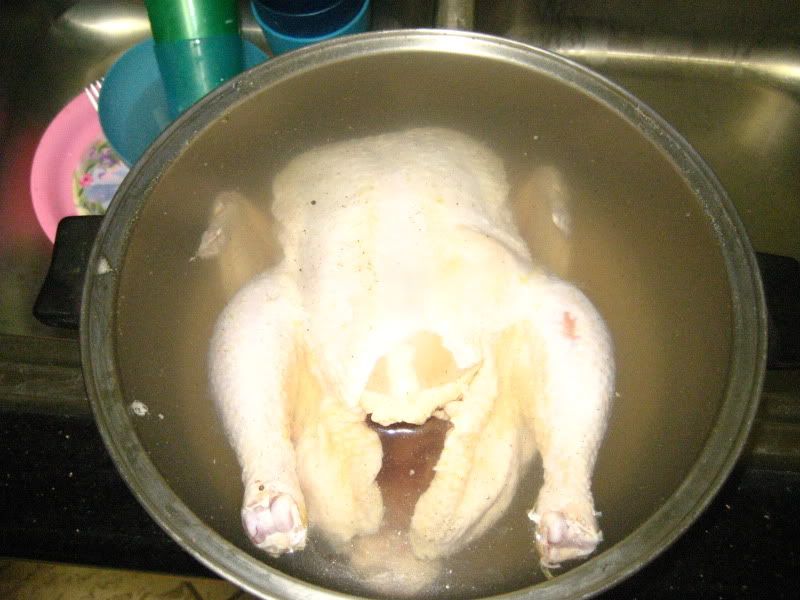

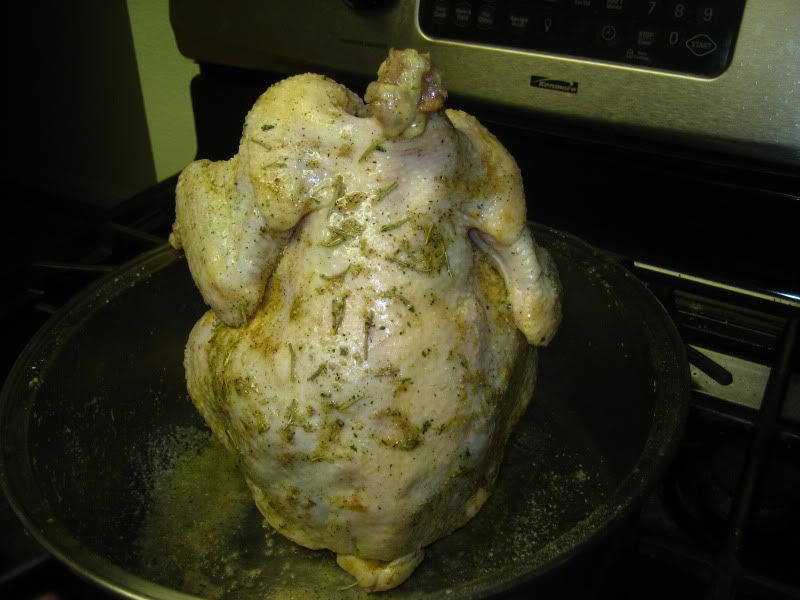

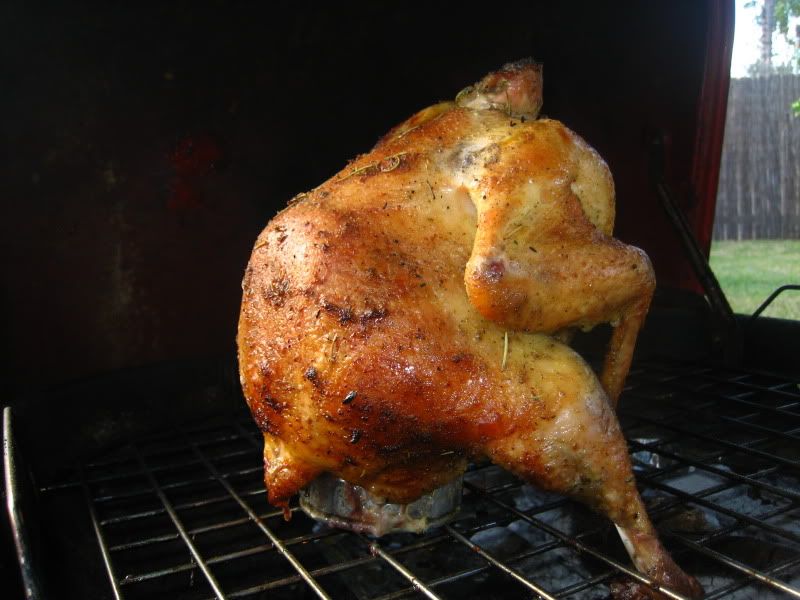

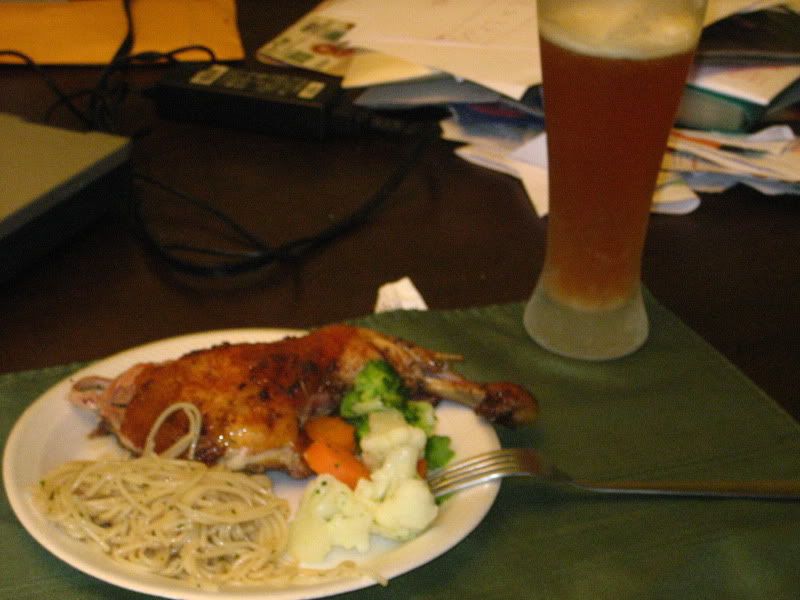







As with all outdoor cooking, I find it helps to marinate the chef with beer or bourbon during the cook time.
Thanks Guys!
John, I'm sure we could work well together on the grilling.
 :lol:
:lol:borjis
LifeTime Supporter
I would suggest not brining pork for too long...it can get salty if you do. Most of the recipes I have tried from the web are pretty vague about brining time, and about half of the brined pork I've smoked or grilled has ended up too salty. Brined chicken and turkey, now that's a different story, those usually turn out good and juicy for me.
- Sep 26, 2013
- 717
- Pool Size
- 5900
- Surface
- Fiberglass
- Chlorine
- Salt Water Generator
- SWG Type
- Hayward Aqua Rite (T-3)
When I see the "new fad" of brining it always makes me chuckle. My people have been koshering (brining) meats for centuries. My mother (now passed to me), had the most magnificent turkeys at Thanksgiving ever. Here is what I do for turkey or chicken (We don't eat much red meat):
I usually brine in a cooler that is a little bigger than the bird (I have multiple sizes)
Veggie stock
Water
Candied Ginger
Kosher salt
Whole pepper corns
Combine all and heat on the stove until the salt dissolves and then cool to at least room temp or lower.
Place bird in the cooler, pour brine over and then finish with a layer of ice (I use bags of ice)
Brine for 18-24 hours turning the bird a couple of times.
Remove bird from brine and rinse and pat dry. Leave at room temp for about an hour with this amazing addition. Place your choice of ice packs, bags of frozen veggies, bags of ice on the breast(s) for that hour. This lowers the temp of the white meat (which usually dries out since it cooks faster) then roast per your choice. I usually start the oven at 550 until I get a good color on the bird and then lower to 350 to finish. Your white and dark meat will cook at the exact same time to the perfect temp and succulent juiciness.
Bon appetit!!!
I usually brine in a cooler that is a little bigger than the bird (I have multiple sizes)
Veggie stock
Water
Candied Ginger
Kosher salt
Whole pepper corns
Combine all and heat on the stove until the salt dissolves and then cool to at least room temp or lower.
Place bird in the cooler, pour brine over and then finish with a layer of ice (I use bags of ice)
Brine for 18-24 hours turning the bird a couple of times.
Remove bird from brine and rinse and pat dry. Leave at room temp for about an hour with this amazing addition. Place your choice of ice packs, bags of frozen veggies, bags of ice on the breast(s) for that hour. This lowers the temp of the white meat (which usually dries out since it cooks faster) then roast per your choice. I usually start the oven at 550 until I get a good color on the bird and then lower to 350 to finish. Your white and dark meat will cook at the exact same time to the perfect temp and succulent juiciness.
Bon appetit!!!
I have brined pork loin with great results. Salt and either water or a broth are the key ingredients. Depending on how I'm going to prepare the pork loin will determine whether I use water or a broth. Other seasonings can be added based on personal preference.Patrick_B said:I'm really curious how well it works with Pork, and with which cuts?
Osmosis takes place when brining in a salt & water solution. In the initial stage of brining, moisture moves from an area of lower salt concentration (the meat) to an area of higher salt concentration (the brine). Once equilibrium is reached, the liquid flows back and forth between the meat and the brine solution. During this stage, the liquid along with the seasonings are carried into the meat. This is why brining times are longer for larger cuts of meat - it simply takes longer to reach equilibrium. The other role played by the salt is that it denatures and dissolves some proteins. The dissolved salt causes some of the proteins in muscle fibers to unwind and swell. This allows the brine solution to bind directly to these proteins. As a result, water gets trapped between these proteins when the meat cooks and the proteins bind together. This means juicer meat.
The cooking method is the other part of the equation. Continuing to use pork loin as an example, I remove it from the brine, dry the surface thoroughly and let it sit on the counter or in the fridge for about 15-20 minutes, uncovered. Right before seasoning, I pat-dry the surface again. I apply a thin coat of olive oil or clarified butter and then add the desired seasonings. I then sear the surface. This is the reason for eliminating as much water from the surface of the meat. Too much moisture on the surface will result in more steaming and less searing of the surface (oil or clarified butter does not result in this effect). I prefer to sear with the meat cold (some recommend tempering at room temperature for an hour or more). My reasoning is this...when I'm searing, I want to give it that appealing brown crust on the surface, but without cooking the interior of the meat. The cooler the internal part of the meat is, the less likely the layers just below the surface will be cooked. The goal is to minimize or eliminate that gray band between the nicely-browned surface and the juicy pink interior of a properly done pork loin.
Once the searing is done, I slow cook it at a low temperature until the internal temperature of the meat reaches 141-142°F (it will rise another degree or two after removing from the cooking source due to the carry-over effect). This part of the cook can take place on a grill, smoker, an oven, or any combination of these. I usually aim for an oven-grill temperature between 200 and 225°F. This process approximates sous-vide without all the fancy equipment. This method also helps tenderize the meat. Once the meat's internal temperature is between about 85-122°F (depending on the meat), the meat's enzymes act as natural tenderizers, breaking down any connective tissue. The longer it is held in this temperature range, the more this process will occur - hence the low cooking temperature. Eventually, the internal temperature of the pork will rise above 122° and you need to continue cooking until it reaches at least 140°. Although rare in the US due to vastly-improved pork ranching practices over the past several decades, any trichinosis that may be present are killed when pork reaches 138°F and is held there for just a few minutes.
This process does require accurate temperature devices. I use a ThermaQ during the cook. Its dual-channel functionality allows simultaneous monitoring of the oven/grill temperature and the internal temperature of the meat. When I remove the meat from the cooking source, I also use a Thermapen as a double-check of the internal temperature.
Wow, thanks for the detailed reply Bo D. Much appreciated. I'm guessing this will work as well on a Butt (shoulder) roast wouldn't it? I know Brining and Salt curing are ancient preserving methods, but it's an interesting process.
What about ratios of salt? I've read these online, but what do any of you use, and how much does it matter as long as you have enough salt? How much is TOO much?
What about ratios of salt? I've read these online, but what do any of you use, and how much does it matter as long as you have enough salt? How much is TOO much?
Patrick, I don't bother brining shoulders or butts. Don't even think I've ever tried. They just don't seem like they'd benefit from it like the drier meats like loin and white meat poultry do.
I've always injected pork shoulder instead of brining it-which I explain below. With that said, the brining process will work with a shoulder roast - it's just that it will require a very long time in the brine to get the desired effect (about 12-16 hours - similar to what I do with a 14-18 pound turkey). This is due to the longer time needed to reach equilibrium between the brine and the meat when most of the moisture and flavor transfer takes place. You will need to keep the brine solution cold (below 40°F) as a safeguard to prevent bacterial growth, although the salt will also give some protection against that. If you don't have the refrigerator space, you will need an insulated container and will need to add ice to the brine periodically to keep it cool. With each ice addition, you will need to add salt to compensate.
As for the salt ratios, it depends on a variety of factors, including the type of salt used and, if you are using a broth, how much salt is in the broth. If that weren't enough, I've also seen a wide range of opinions on the "ideal" salt/water ratio. Kosher salt and table salt (without iodine) are the most common salts used in brining. Sea salt can also be used, although it is more expensive. I usually use kosher salt. A cup of table salt and a cup of kosher salt are not equal in weight. Table salt weighs approximately 10 ounces per cup and kosher salt weighs approximately 5 to 8 ounces per cup depending on the brand. If using kosher salt in a brine, you must use more of it to get the same "saltiness" you would get from an equal volume of table salt. Below is a generally-accepted guideline on how to substitute the two most popular brands of kosher salt for 1 cup of ordinary table salt (without iodine).
I tend to measure things by weight as opposed to volume, so I usually aim for about 3/4 lb of salt per gallon of water. If I'm using a broth that contains salt, I cut back on the added salt. If you need to add ice to the brine to keep it below 40°F, then you need to add more salt to compensate. When I do this with the Thanksgiving turkey brine, I usually "wing it" with the amount of additional salt added.
Since it is easier to keep the brine used for Thanksgiving turkey below 40°F in late November, due to cooler temperatures, than it is during summer when I do most of my traditional BBQ, I've always injected pork shoulder instead of brining it. Pork shoulder has much more collagen in it (vs. pork loin) that will break down during the long & slow cook and keep it from drying out. Therefore, there is some level of diminishing returns when brining a pork shoulder compared to a leaner cut such as pork loin. For the cook, I put the pork shoulder on the smoker with an initial blast of heat for the first 45 minutes or so (to give it a good bark), followed by the traditional low & slow cook method for the duration.
As for the salt ratios, it depends on a variety of factors, including the type of salt used and, if you are using a broth, how much salt is in the broth. If that weren't enough, I've also seen a wide range of opinions on the "ideal" salt/water ratio. Kosher salt and table salt (without iodine) are the most common salts used in brining. Sea salt can also be used, although it is more expensive. I usually use kosher salt. A cup of table salt and a cup of kosher salt are not equal in weight. Table salt weighs approximately 10 ounces per cup and kosher salt weighs approximately 5 to 8 ounces per cup depending on the brand. If using kosher salt in a brine, you must use more of it to get the same "saltiness" you would get from an equal volume of table salt. Below is a generally-accepted guideline on how to substitute the two most popular brands of kosher salt for 1 cup of ordinary table salt (without iodine).
- Diamond Crystal Kosher Salt = 2 cups
- Morton Kosher Salt = 1-1/2 cups
I tend to measure things by weight as opposed to volume, so I usually aim for about 3/4 lb of salt per gallon of water. If I'm using a broth that contains salt, I cut back on the added salt. If you need to add ice to the brine to keep it below 40°F, then you need to add more salt to compensate. When I do this with the Thanksgiving turkey brine, I usually "wing it" with the amount of additional salt added.
Since it is easier to keep the brine used for Thanksgiving turkey below 40°F in late November, due to cooler temperatures, than it is during summer when I do most of my traditional BBQ, I've always injected pork shoulder instead of brining it. Pork shoulder has much more collagen in it (vs. pork loin) that will break down during the long & slow cook and keep it from drying out. Therefore, there is some level of diminishing returns when brining a pork shoulder compared to a leaner cut such as pork loin. For the cook, I put the pork shoulder on the smoker with an initial blast of heat for the first 45 minutes or so (to give it a good bark), followed by the traditional low & slow cook method for the duration.
My go to brine is a Jack Daniels and Maple Syrup Brine, it's killer. My favorite application is on Turkey. I also brine chickens and pork loin.
Here's a picture of a JD Bird smoked over cherry wood, KILLER!
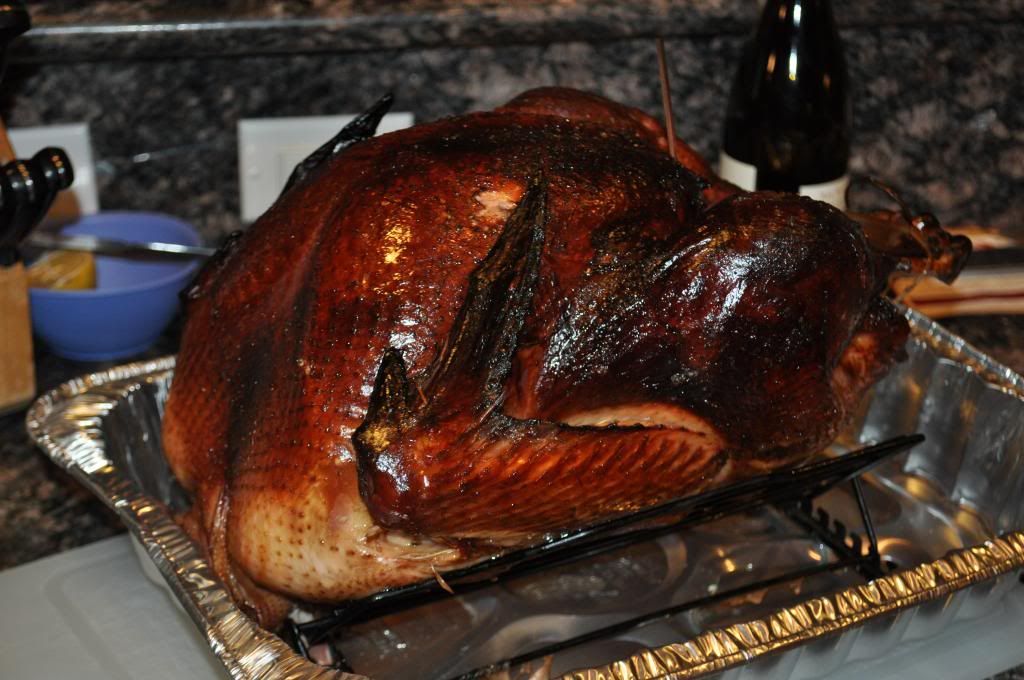
Here's a picture of a JD Bird smoked over cherry wood, KILLER!

I inject meats about 4 hours before going in the smoker or on the grill rather than brine 12+ hours.
For pork loins I use Walton's Chipotle/Honey blend Soluble Chipotle Honey Seasoning for Injecting - Walton's
For pork butts and briskets I use injection mixes from Butcher BBQ; Butcher BBQ Brisket Injections and Rubs
And for poultry I use his Bird Booster Butcher BBQ Brisket Injections and Rubs
For pork loins I use Walton's Chipotle/Honey blend Soluble Chipotle Honey Seasoning for Injecting - Walton's
For pork butts and briskets I use injection mixes from Butcher BBQ; Butcher BBQ Brisket Injections and Rubs
And for poultry I use his Bird Booster Butcher BBQ Brisket Injections and Rubs
Brined some pork loin over the weekend that got rave reviews. 1/4 cup kosher salt and 1/4 cup brown sugar per quart of water is the base. I usually add some Worcestershire, minced garlic, and red and black ground pepper.
When you can cut it with a fork, you know you got it right.
It was cold and windy here, so I got up at 6 to put it on the smoker. Was done about 10:00, so I set the oven for 450 and wrapped the loins in foil to keep them warm.
When you can cut it with a fork, you know you got it right.
It was cold and windy here, so I got up at 6 to put it on the smoker. Was done about 10:00, so I set the oven for 450 and wrapped the loins in foil to keep them warm.
I'll join the "birds only" crowd. For anything else I've either found it to be counter-productive, or at least very little difference, and how it's roasted, smoked, etc makes the only real difference.
However, as others mentioned, for a pork loin it may help and I can see that. I'll have to try it next time. I avoid pork loins myself, but about once a year my wife brings one home because she found one on sale and asks if I can smoke it for pulled pork. I'll remind her I use a shoulder/ Boston Butt for that, or a picnic roast. A year later she forgets again, lol. I like a juicy loin sliced up, but she wants pulled pork and brings me a loin, sheesh!!!
Just did a 9 lb shoulder in the smoker yesterday though A big roast takes so long it provides a good excuse to drink beer all day while it smokes!!!
A big roast takes so long it provides a good excuse to drink beer all day while it smokes!!!
However, as others mentioned, for a pork loin it may help and I can see that. I'll have to try it next time. I avoid pork loins myself, but about once a year my wife brings one home because she found one on sale and asks if I can smoke it for pulled pork. I'll remind her I use a shoulder/ Boston Butt for that, or a picnic roast. A year later she forgets again, lol. I like a juicy loin sliced up, but she wants pulled pork and brings me a loin, sheesh!!!
Just did a 9 lb shoulder in the smoker yesterday though
I'm trying this on Quail this weekend. I had some of the best Fried whole Quail you ever tasted while in Dallas this week and the Chef would not say what made it so juicy. I've eaten and cooked many a Quail, and never have I had it so tender and Juicy as this, no matter how, or how carefully I cooked it. I'm wondering if they brined it. 

I'm trying this on Quail this weekend. I had some of the best Fried whole Quail you ever tasted while in Dallas this week and the Chef would not say what made it so juicy. I've eaten and cooked many a Quail, and never have I had it so tender and Juicy as this, no matter how, or how carefully I cooked it. I'm wondering if they brined it.
I'd about bet on it.
Just my two cents, but I'd agree with NeedMoreSun - I've tried brining pork, but the real difference seems to be the wood and smoking process. Beef short ribs seem better with injection and rub. My go-to brine for birds was admittedly stolen from The Neeleys on FoodNetwork. It's bourbon, brown sugar, whole peppercorns and apple juice with the usual salt/water mixture added. I also stuff the bird with apple, onion and celery. So far, nothing but rave reviews. Wish the brine was my own concoction and I could take credit!! JohnT, what's the best beer brine for the chef - I'd be interested in your thoughts on brine time, type of brine, etc. 
Thread Status
Hello , This thread has been inactive for over 60 days. New postings here are unlikely to be seen or responded to by other members. For better visibility, consider Starting A New Thread.

